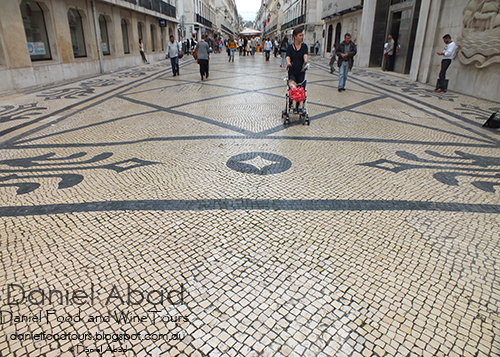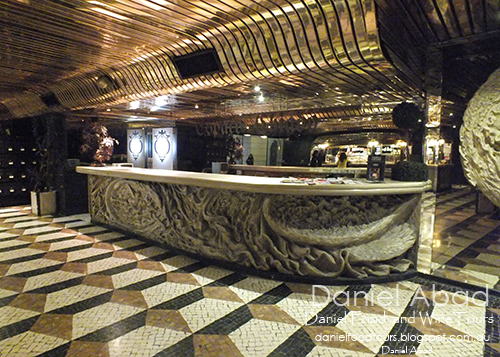After an unforgettable stay in
Sevilla; filled with the passionate sounds of Flamenco, a unique architecture,
romantic gardens and some delightful food, it was time to head for
Portugal. First stop; its capital
Lisboa. This place and its history have
always fascinated me and I was keen to put the little Portuguese I knew to the
test. I expected some of the locals
would speak some Spanish but was quite surprised to meet quite a few who spoke
French. This I found out is due to the
large number of Portuguese tradesmen (principally in the building industry) who
have spent some time working in France.
 |
| Monastery of Jeronimos |
 |
| The Bull Ring - Campo Pequeno |
I had a few things I wanted to do
while in Portugal; sample their famous cod dishes, discover the Alfama
district; the famous old quarter of the city, listen to some Fado, the
traditional Portuguese musical expression and wander the streets of this
legendary city.
 |
| Triumphal Arch in Comercio Square |
 |
| Lisboa Architecture |
Lisboa is
the capital and the largest city of Portugal, with a population of around 2.7
million people. It is situated on the northern banks of the River
Tagus (Rio Tejo). The river established
Lisboa as a major Roman port with its estuary providing good protection from
the Atlantic Ocean.
 |
| Discovering the Streets of Lisboa |
 |
| Interesting Balcony display |
Lisboa is one of the oldest cities in the world and the oldest in
Western Europe. Ruled by a series of
Germanic tribes from the 5th century, it was later captured by the Moors. Prior to the 18th century, Lisboa had
experienced several significant earthquakes.
In November 1755, the city was destroyed by another devastating
earthquake, which killed an estimated 30,000 to 40,000 residents and destroyed
85 per cent of the city's structures. After
this earthquake, the city was rebuilt largely according to the plans of Prime
Minister, The1st Marquess of Pombal.
 |
| The Statue of the Marques of Pombal - the Rebuilder of Lisboa |
Much has been said about the many remarkable features of the
reconstructed Lisboa after this latest earthquake. I was instantly impressed by the grandeur of
its avenues, the imposing columns bearing the notable people who left their
marks on the city and the country. The
architecture of some of the buildings was a testimony of the rich history of
the city and the open spaces and various green areas were friendly and
welcoming. I was also fascinated by the
stunning Black and White mosaic on all the footpaths and public squares.
 |
| Statue Near the Rossio Square Fountain |
 |
| The Impressive Mosaic Displays Are Everywhere |
 |
| More Mosaic in the City |
 |
| I Wonder How Much Time This Display Would Have Taken To Complete |
During World War II, Lisboa was one of the very few neutral, open
European Atlantic ports, a major gateway for refugees to the U.S. and a haven
for spies. More than 100,000 refugees
were able to flee Nazi Germany via Lisboa.
We went on the traditional form of public transport in Lisboa; the tram.
These yellow trams (Line 28 is the most famous)
are not only used by tourist but by many locals as well. We were repeatedly told to watch out for
pickpockets. We couldn’t resist taking a
ride on a small motorised open-air taxis (similar to the ones you find in some
Asian countries). It was a lot of fun to
zoom in the streets and get a closer feel of the moment and the place.
 |
| The Famous Line 28 Lisboa Tram |
 |
| The Other Famous Mode of Transport in Lisboa |
Whether it was the cod dishes, pastries, wines or freshly squeezed
orange juice in the morning for breakfast, all the foods I tried left me very
impressed. I was also particularly taken
by the caring approach that Portuguese restaurants have about the food they
serve.
 |
| Grilled Cod and Steamed Vegetables - Simple but Delicious |
 |
| Portuguese Pastries |
Lisboa, is a city also known for its soulful Fado music. Fado is what it is to be Portuguese. There were various places where Fado was
performed. Rather than opting for one of
the many outlets that offer this kind of entertainment, we chose the
theatre. I hadn’t heard much Fado and
didn’t know much about it either. The
90-minute show was an absolute delight.
A lot of emotion and musical talent go into Fado and what attracted me
most was the elegance of its language and the depth of the emotions. There is a huge difference between Flamenco
and Fado; two musical expressions from two countries located next to each other
and with so much history in common.
 |
| Statue Celebrating the Fado |
 |
| The Reception Hall of the FadoTheatre |
All in all, an unforgettable two days in Lisboa. I would like to return there one day. Our next destination; the medieval town of
Obidos.



















No comments:
Post a Comment